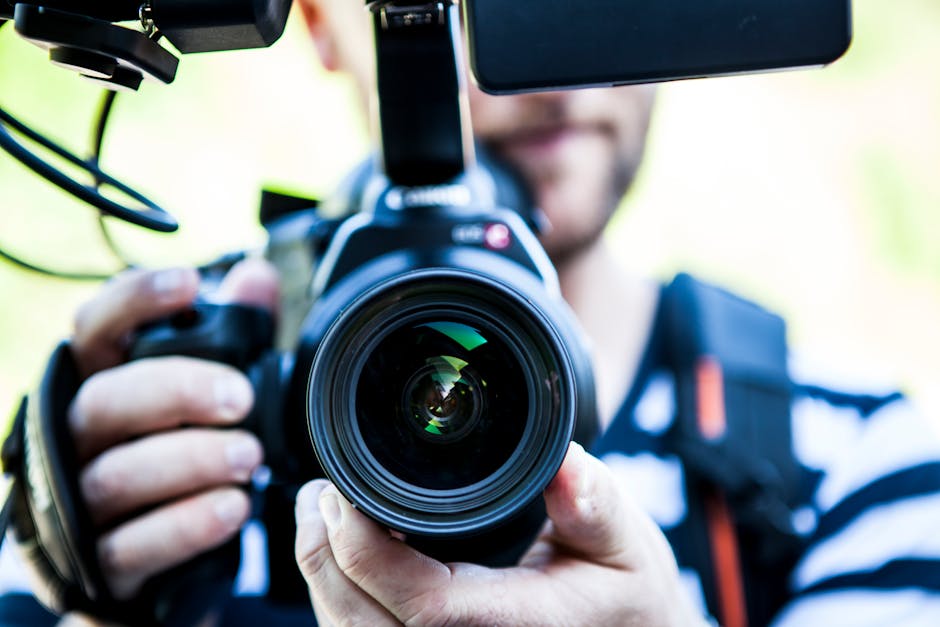Introduction: The Road From “Just for Fun” to Full-Time
Once, vlogging was seen as a hobby—something you did after class or in between jobs. Now, it’s a legitimate career path. Top creators aren’t just filming their lives; they’re running media companies disguised as YouTube channels. The money is real, the schedules are packed, and the opportunities go far beyond ad revenue.
Still, the ones who stick around don’t just chase numbers. They’ve found the balance: doing what excites them while staying clear-eyed about analytics, branding, and content strategy. That middle ground—where your passion fuels your process—is where the long-term success lives.
Casual creators post when they feel like it. Career vloggers show up even when they don’t want to. The difference isn’t glamorous—it’s consistency, clarity, and the willingness to grind. And in 2024, there’s more room than ever for those willing to treat the craft seriously, without losing themselves in the process.
Chapter 1: What They All Did Right
There’s no secret formula, but there is a pattern. The vloggers who broke through didn’t wait around for motivation or virality. They showed up early—and often. Upload schedules weren’t just consistent; the content landed that sweet balance of personal and purposeful. Whether it was beauty tutorials or travel logs, viewers knew what they were getting, and that clarity built momentum.
Trust came next. Not by oversharing or chasing trends—but by being deliberate. These creators talked to their audience like equals. They answered questions, adapted with honesty, and stuck to their promises. If the thumbnail said “Day in the Life,” they delivered it with intention, not fluff.
And when growth started to show? The smart ones didn’t blow their first brand deal on flashy upgrades. They reinvested methodically—leveling up their gear when it actually improved quality, refining their branding for clarity, and leveling-up their skills to match their expanding platforms. Always forward, but never rushed.
That’s what made the difference: showing up with focus, building something steady, and growing with purpose. The success we see today was rarely accidental—it was planned, brick by brick.
Chapter 2: Standout Success Stories
Emma Chamberlain didn’t just vlog—she dropped the veil. Her unfiltered monologues, thrift-store fits, and stripped-back edits made her different in a space full of polish and pose. That rawness hit a nerve. Early uploads looked like a teenager figuring it out. Now, she’s a face of Louis Vuitton, runs a coffee brand, and still talks like she’s recording in her childhood bedroom. That’s the brand: authenticity without trying too hard.
Marques Brownlee, aka MKBHD, started filming tech reviews with a webcam and a laptop. Today, he’s interviewing Elon Musk, running a full production studio, and shaping how tech companies think about product launches. His edge? Insane attention to detail, zero fluff, and consistency that could rival Swiss trains. He didn’t chase trends—he built trust through clarity and craft.
Lilly Singh, better known to OG subscribers as Superwoman, took relatability and comedy and turned it into a media footprint far beyond YouTube. Skits led to speaking gigs. Characters evolved into a book deal, a late-night show, and a legit production company. She moved with intention. Each new level came with a new layer of business thinking, but without losing the voice that brought her audience along in the first place.
What ties these three together? The work ethic, for one. None of them blew up overnight—they showed up regularly and kept improving. They each stayed true to a defined voice, clarifying what they offered and why it mattered. And above all, they built with their communities, not above them. That’s the playbook: stay sharp, stay honest, build slow—and engage like you mean it.
Chapter 3: Pivoting from Content Creator to Business Owner
Vlogging sustainably means thinking beyond ad revenue. The most successful creators aren’t relying on monetized views alone—they’re building ecosystems. Courses, digital products, live workshops, merch drops, even paid newsletters—these aren’t just side hustles anymore. They’re core revenue streams. If your audience trusts you, they’ll pay for more direct access, tools, or insights. The key is keeping these offers aligned with your brand and actually useful to your tribe.
But as income streams expand, so does the workload. That’s where delegation steps in. Editing, thumbnails, DMs, email lists—it’s a lot. Waiting too long to outsource can burn you out and stall growth. Hiring a small team (even part-time or freelance) makes sense once you’re earning steadily and know where your time matters most. You don’t need an agency. You need two or three good people with clear roles.
Above all, protect your core energy. The business side can get loud. If you’re in meetings all day, you’re not making videos. Block creative time like it’s sacred. Systematize the repetitive stuff. Say no more often. Scaling up shouldn’t mean burning out. Keep the camera rolling, not just the wheels turning.
Chapter 4: Lessons for New Vloggers
Don’t Chase the Viral Lottery
Starting a vlogging journey with the single goal of “going viral” is one of the fastest ways to burn out. Viral moments are unpredictable, and building a sustainable career requires intention, not luck.
- Viral success rarely leads to long-term audience loyalty
- Focus on consistency, niche selection, and authenticity
- Build a foundation that survives algorithm changes
Work Like a Creator, Schedule Like a CEO
Behind every successful vlogger is a disciplined content workflow. Treating your vlog like a real job means creating a framework you can stick to.
Tips to structure your content schedule:
- Batch film and edit where possible
- Use content calendars to plan themes and campaigns
- Build buffers for burnout by pre-scheduling lighter content
- Allocate time for ideation and experimentation, not just production
Use Data—Without Getting Derailed
Analytics can be powerful when used wisely. But for early-stage creators, obsessing over numbers can erode creativity and confidence. Instead, use data to refine—not define—your process.
- Track trends in watch time, retention, and feedback
- Use metrics to test formats and posting times
- Avoid judging your self-worth by stat spikes or dips
Learn from Other’s Mistakes
Before investing time and energy into your channel, it’s worth understanding common missteps others have made—and how to avoid them.
Read more on early-stage pitfalls: The Most Common Mistakes New Vloggers Make and How to Avoid Them
Conclusion: Make the Leap, But Do It Right
There’s nothing effortless about turning a vlog into a career. Anyone selling the dream without the work is bluffing. But here’s the quiet upside: the path is clearer than it’s ever been. Creators who treat content like craft—not a scratch ticket—stand a real chance of building something that lasts.
This world rewards consistency and clarity. Show up, know your voice, and respect the time of your audience. That means dropping the gimmicks and doubling down on your message. Staying humble helps. So does tightening your process and getting sharper with every upload. The ones who win? Not always the flashiest—but always the most disciplined.
It’s not always glamorous. But it works.


 As a co-founder of vlogedgevault Zorien Quenthos combines technical expertise with visionary leadership. His contributions spotlight the latest innovations in media technology, ensuring the platform remains a trusted hub for vloggers and digital creators.
As a co-founder of vlogedgevault Zorien Quenthos combines technical expertise with visionary leadership. His contributions spotlight the latest innovations in media technology, ensuring the platform remains a trusted hub for vloggers and digital creators.

